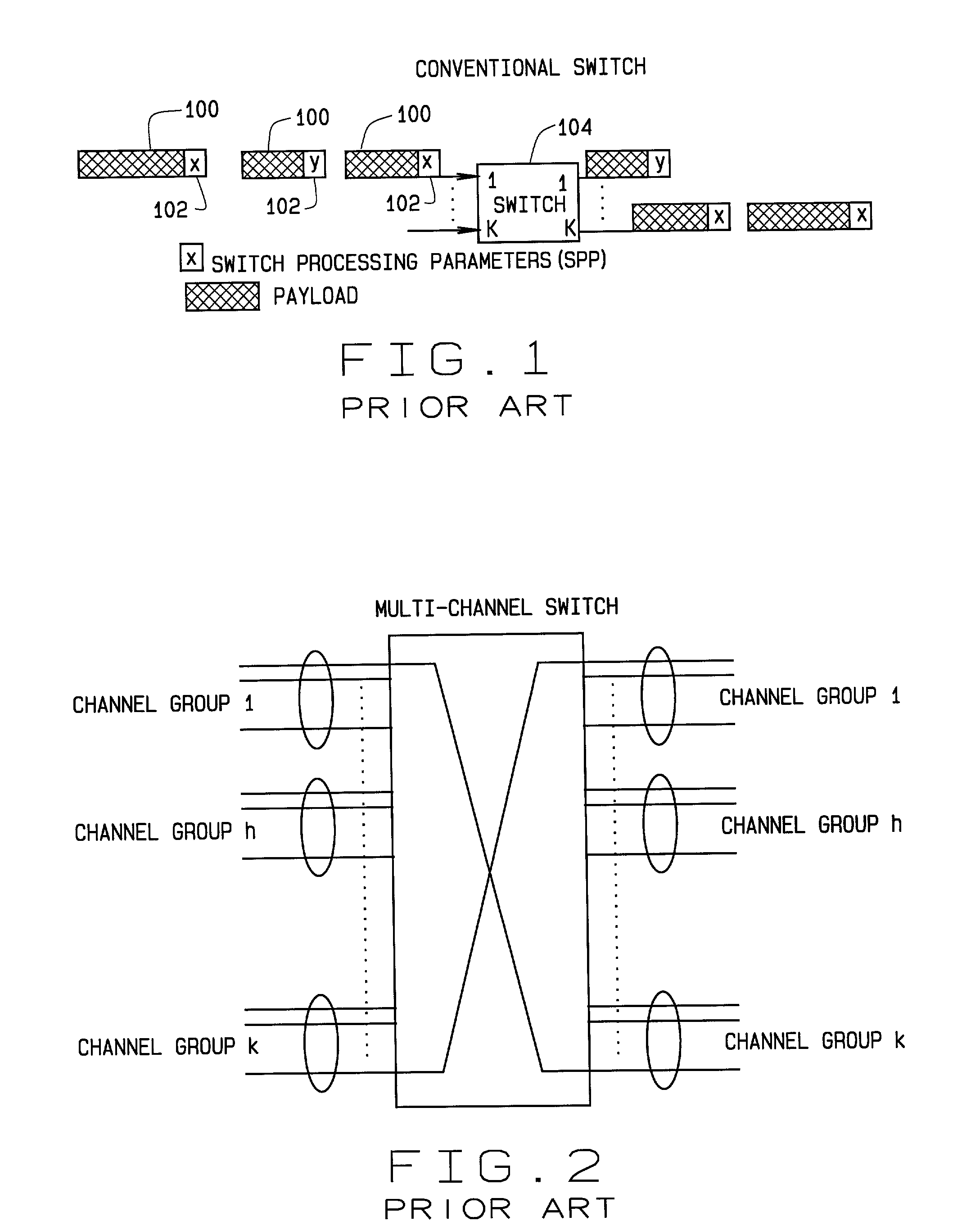Method and apparatus for high speed packet switching using train packet queuing and providing high scalability
a high-speed packet switching and train packet technology, applied in data switching networks, frequency-division multiplexes, instruments, etc., can solve the problems of fundamental scaling limitation of conventional switches, bottlenecks at switch nodes, and failure to increase the capacity of the system as a whol
- Summary
- Abstract
- Description
- Claims
- Application Information
AI Technical Summary
Benefits of technology
Problems solved by technology
Method used
Image
Examples
Embodiment Construction
[0047]The present invention provides a switch where incoming data packets are queued together on the basis of their corresponding SPPs. Under one embodiment, referred herein as sequential train packet processing, data packets sharing the same SPP are encapsulated in a train packet and the train packet is sent across a switch fabric. When this train packet is sent through the switch fabric, only one SPP will need to be processed. Thus, if the train packet is comprised of say, ten data packets, the switch fabric will process those ten data packets with only a single SPP processing. Because the present invention decreases the frequency with which the switch fabric must process SPPs, the switch can be scaled to a high capacity without exceeding the SPP processing capabilities of the switch fabric.
[0048]Under another embodiment of the present invention, rather than sending the train packet across the switch fabric as a unit, the train packet is sliced into a set of subtrain packets prior...
PUM
 Login to View More
Login to View More Abstract
Description
Claims
Application Information
 Login to View More
Login to View More - R&D
- Intellectual Property
- Life Sciences
- Materials
- Tech Scout
- Unparalleled Data Quality
- Higher Quality Content
- 60% Fewer Hallucinations
Browse by: Latest US Patents, China's latest patents, Technical Efficacy Thesaurus, Application Domain, Technology Topic, Popular Technical Reports.
© 2025 PatSnap. All rights reserved.Legal|Privacy policy|Modern Slavery Act Transparency Statement|Sitemap|About US| Contact US: help@patsnap.com



